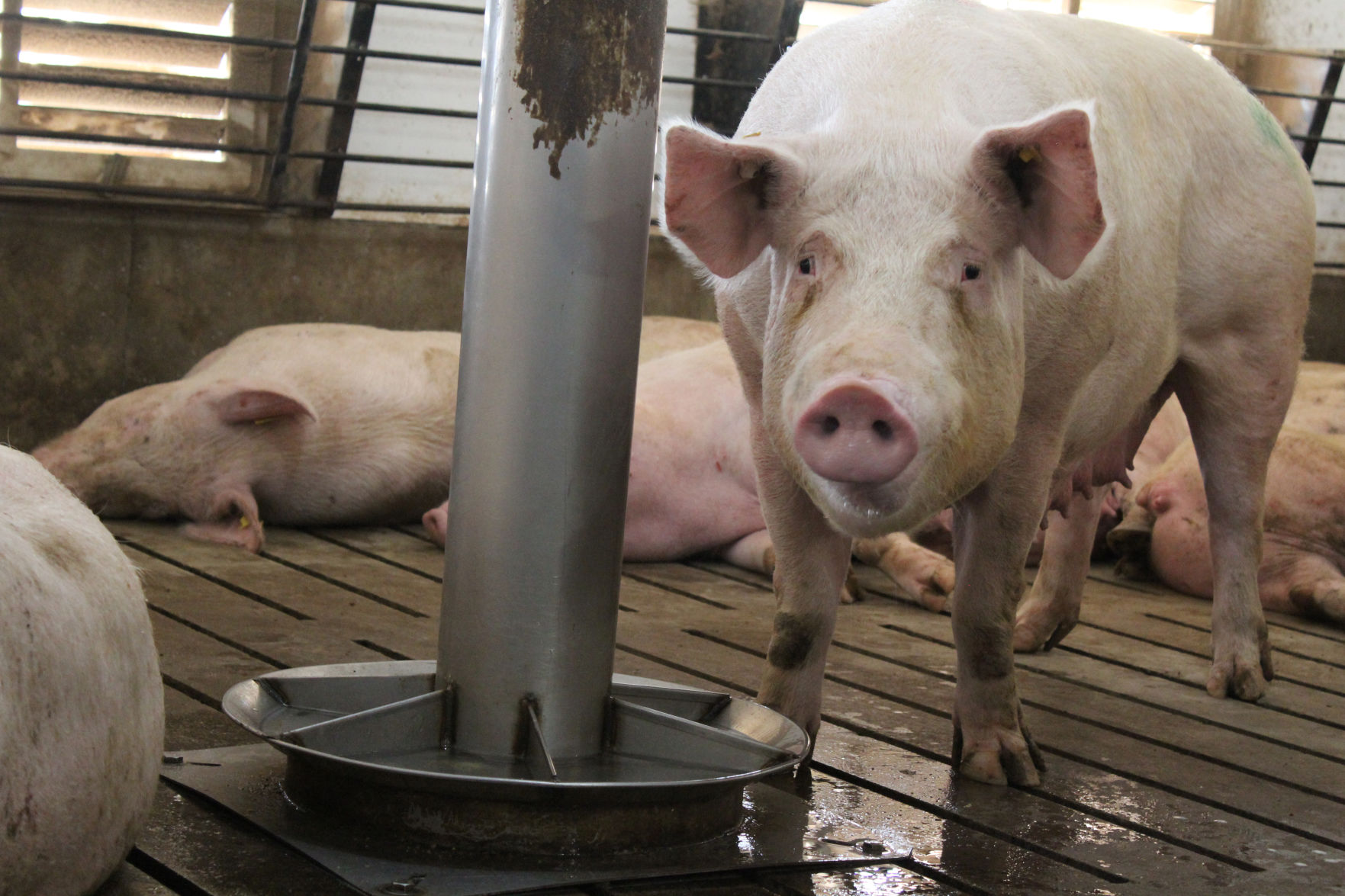Do you really want to know what’s impacting your bottom line? Then get down to slat level. That’s where the less obvious feed-related factors could be stealing your ROI.
“Everything that happens to your sows can impact feed consumption and use,” says Robert Drew, sow management specialist, Nedap Livestock Management, North America. “To make positive, lasting impacts on your bottom line, look at your management practices from your sows’ point of view. What makes them content, comfortable and productive?”
Feed accounts for 60 to 70 percent of pork production costs. Related expenses include feed handling and delivery, as well as storage space for multiple diets. Sometimes feed management basics are overlooked.
“Since feed is a large percentage of input costs, it’s good to review your feed management practices often,” says Drew. “Evaluating data will show you ways to maximize your operation’s return on investment.”
Consider these tips to fine-tune feed efficiency and utilization on your operation:
Reduce environmental stressors: Pigs respond quickly to environmental stress, and their responses can negatively impact performance. Manage your buildings from your sows’ perspective. Consider these questions to “put yourself in their hooves.”
Are your sows calm? What disrupts them?
How is the ventilation in the building?
Is the temperature optimal?
Can your sows eat without interruption and without having to guard their feed from other sows?
If you’re using an electronic sow feeding system, does it have forward exits to minimize interaction between fed and unfed sows?
Adjust rations based on need
Not all sows have the same nutritional requirements. Precise, individual feeding based on parity, condition, and stage of gestation or lactation ensures your sows get the correct nutrition based on their needs. The ability to feed different diets during gestation is advantageous. One of the most accurate ways to meet each sow’s requirements is by collecting individual feed data and reviewing it with your nutritionist.
Monitor feed ingredients and feed quality
From pellet quality to particle size, everything about feed matters. Feed quality and freshness can affect how the sow uses (or wastes) her feed. Testing feed on a regular basis ensures you are achieving your nutritionist’s specific recommendations. Monitoring for unwanted mycotoxins also gives you the best chance to maximize productivity in your herd and avoid health-related challenges.
Measure individual sow feed intake
If a sow hasn’t eaten, chances are there’s a problem. Changes in individual feed consumption can help you recognize more widespread challenges, including: pen or herd health problems, poor water quality or availability, ventilation challenges, feed quality issues and more. Identifying the source of a problem quickly can help you adjust management protocols to get your sows’ productivity and health back on track—helping your operation stay profitable.
Check water daily
Water is vital for sows to utilize nutrients during digestion and for their overall performance and health. Don’t let water be the “forgotten nutrient.” Make sure your sows have easy access to high-quality, clean water 24/7 at the recommended flow rate of 4 cups per minute. Test flow quickly by checking if you can fill a 1-cup measure in 15 seconds.
Feed bin management
Most of us have probably checked feed levels by throwing a rock at the side of the bin, but that’s not the best way to manage your farm’s costliest input. Look inside for any leaks or excessive condensation creating hang-up and compaction, as this quickly leads to moldy feed. Routinely empty feed bins and, where possible, rotate bins to ensure feed delivery into the barn is always fresh.
Adhere to biosecurity protocols
Keeping disease out will keep your sows healthy and efficiently using feed. Develop a biosecurity plan with your veterinarian to prevent the exposure of foreign pathogens. Make sure all employees and your delivery drivers understand and follow your protocols.
“Sows can’t talk, but visual cues and data tell us their story. Your best path to success is to remember the basics: food, water and environment,” says Drew. “A combination of monitoring sow behavior, interpreting production and feed data, and adjusting feed practices will benefit your bottom line. If you take care of the sow, she’ll take care of you.”
